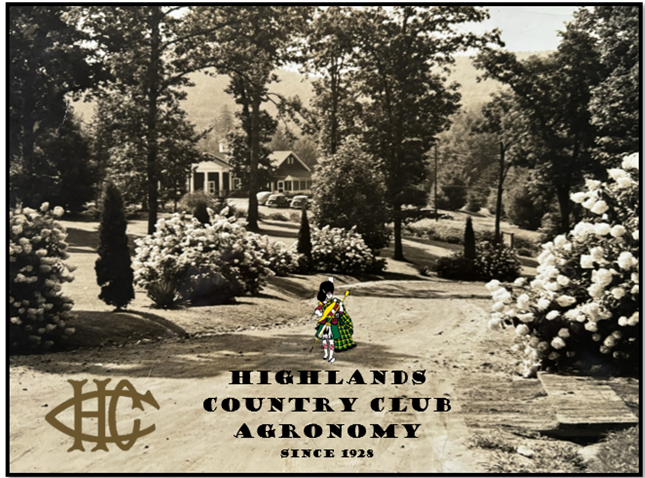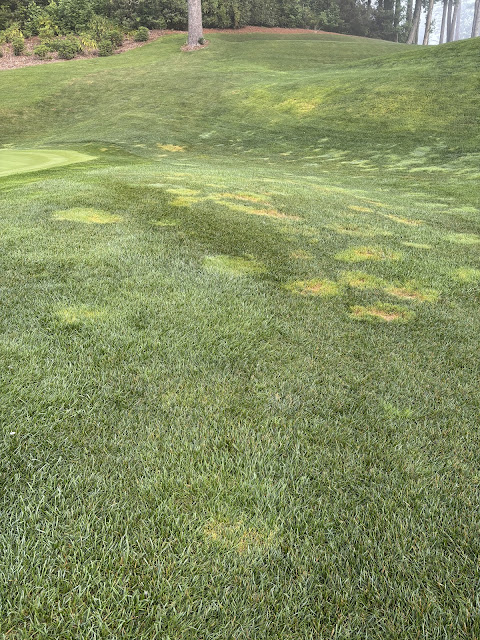Every winter, my team spends a considerable amount of time
resodding turf in the rough. The question is, why bother if it's a losing
battle? The life of Kentucky Bluegrass sod at Highlands CC can last
anywhere from 4 years, up to 10 years before the contamination of other
turfgrasses requires it to be resodded again.
Everyone loves the clean look of Kentucky Bluegrass rough (from this point on, I'll refer to Kentucky Bluegrass as KBG). It provides a great contrast between a lime green fairway and the dark green rough. The golf ball also sits up on it nicely compared to 2" tall Bentgrass, where the ball settles down into the turf.
In our climate of mild temperatures and abundant rainfall, Bentgrass and Poa annua are always going to be a challenge in the rough. The main reason for this is when the turf resumes active growth in the spring. Without getting into too many details, Bentgrass and Poa annua have about a one-month head start on the Kentucky Bluegrass, which requires much warmer temperatures for growth. During this time, these unwanted grasses have a competitive advantage and use it to their benefit. As summer progresses, Bentgrass also does better surviving in wet conditions and lower light situations where shade is an issue.
So far I have identified two reasons why a pure stand of KBG is important in the rough. One is aesthetics and the other is playability. But there is another reason I'll explain below.
Both Bentgrass and Poa annua are far more susceptible to fungal diseases, heat stress and insect pressure. This means that they require a lot of inputs like fungicides, to remain looking good. Even in the photo below, this area behind #1 green has received four fungicide applications this year, to date, and the Poa annua is still struggling. Incidentally, this area will be resodded this winter. The turf doesn't look good and still requires us to apply chemical treatments that KBG doesn't require. So the third reason why re-sodding roughs is important, is that KBG rough saves resources and reduces chemical inputs.
Every year, we allocate about $70,000 to our operating budget to replace the rough in areas on the golf course. $70,000 is enough money to approximately re-sod 1.5 holes, with the average length of a par 4 hole, specifically. We prioritize the areas where playability is a major factor or areas that are visually not as attractive as they could be. We also try to use these funds by re-sodding large areas rather than small areas here and there. This allows us the ability to apply an herbicide, known as Tenacity, that selectively removes Creeping Bentgrass from a stand of KBG or Tall Fescue. The chemistry isn't perfect, but it does help prolong the life of the KBG before it needs to be resodded. We've been using this product for many years, and you would know it because it turns the Creeping Bentgrass bright white in color, in the fall, before it dies.


